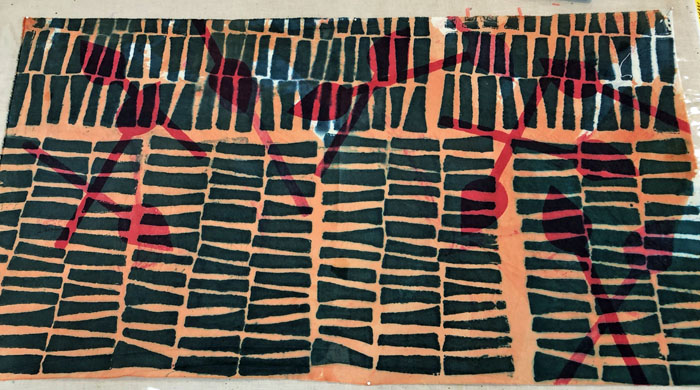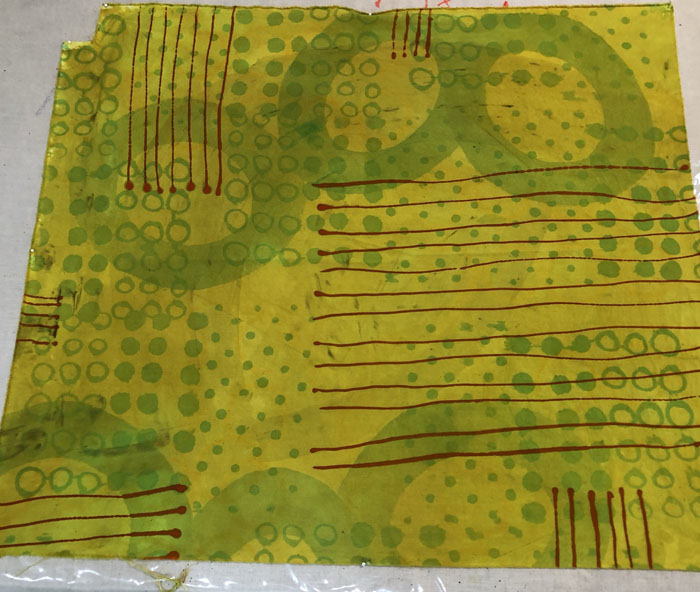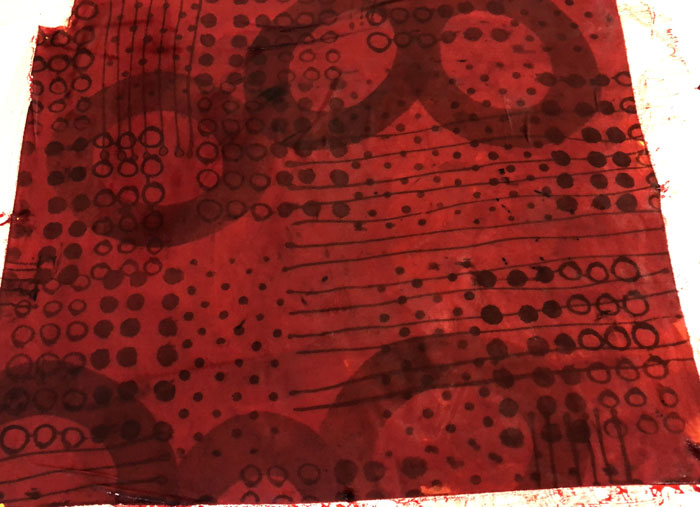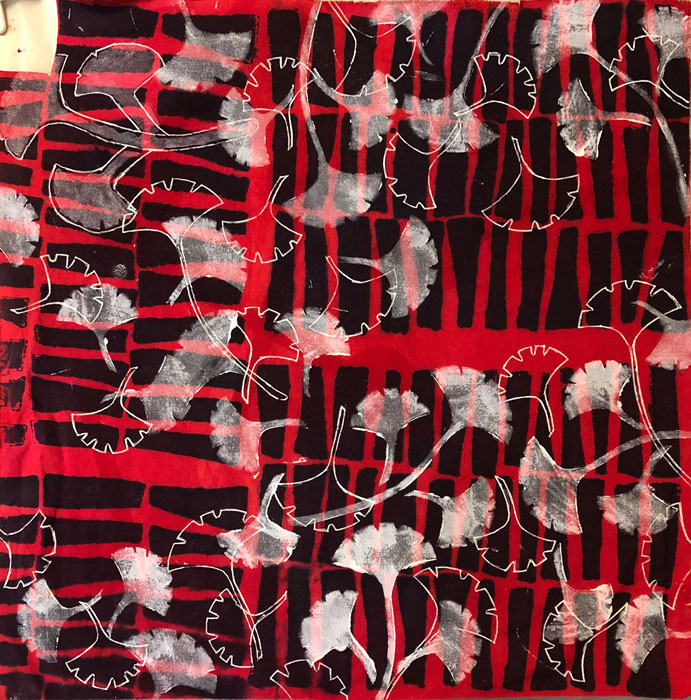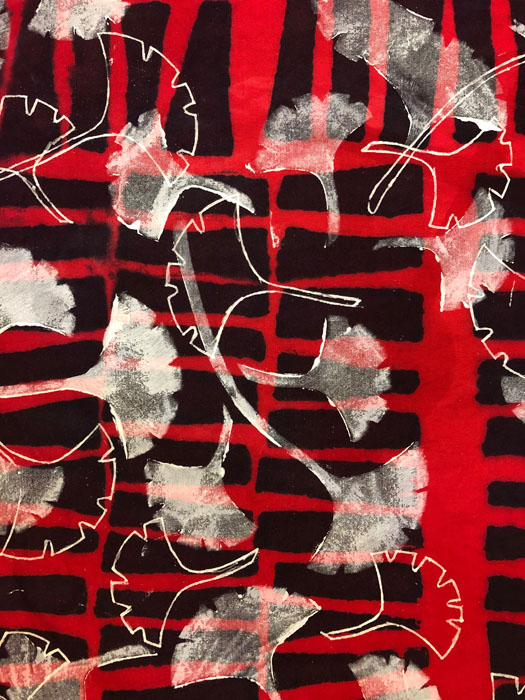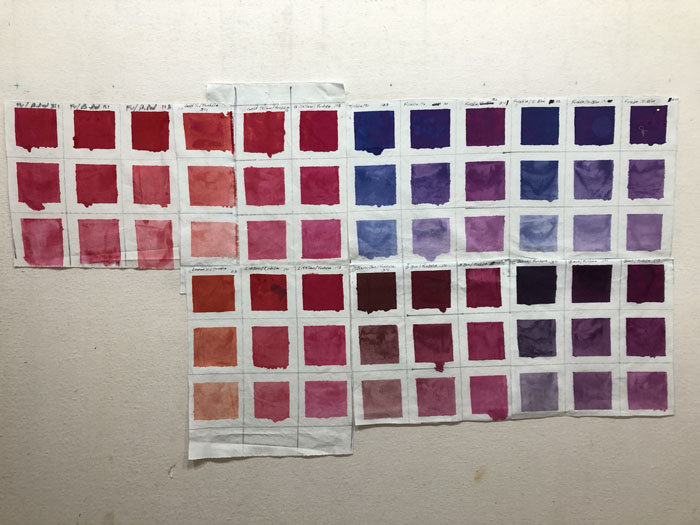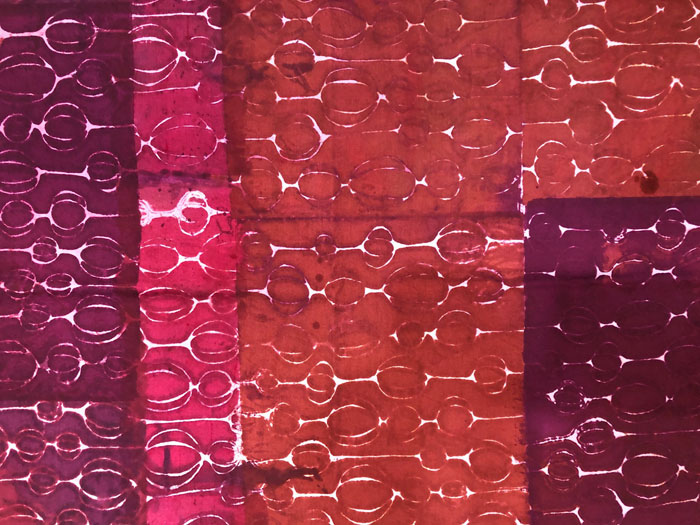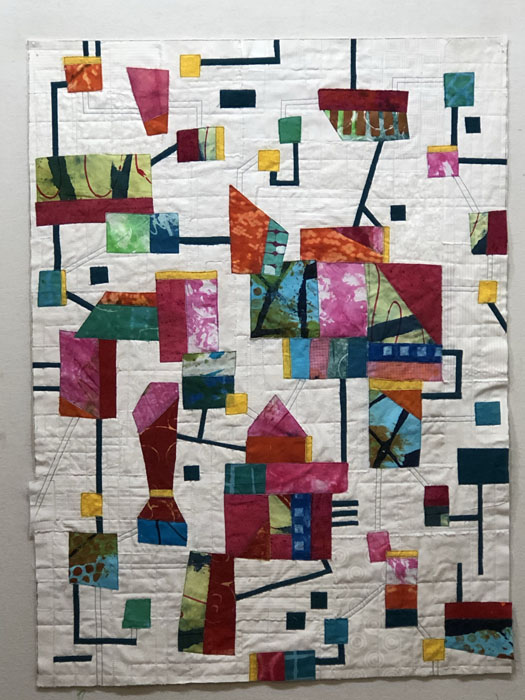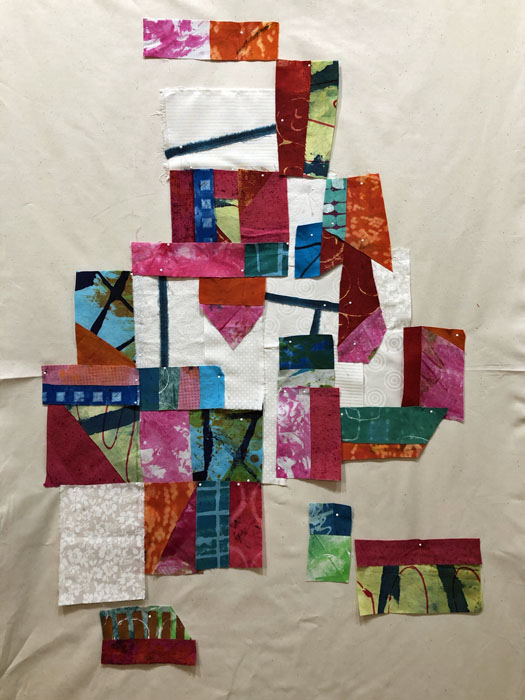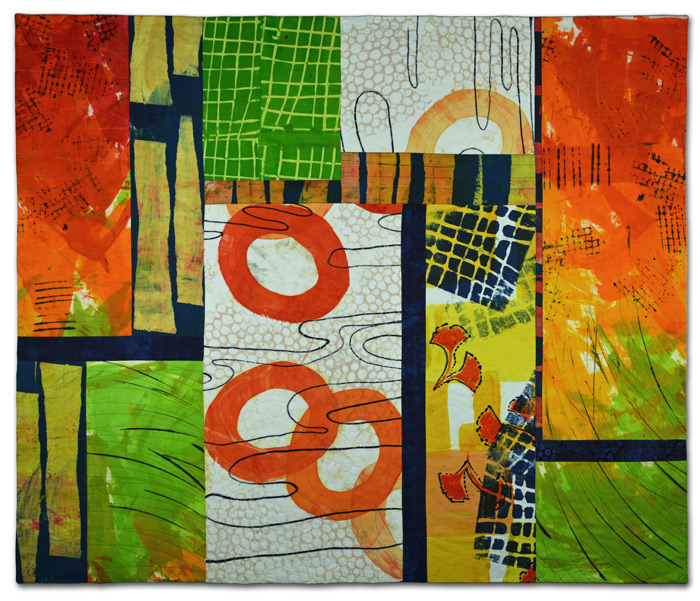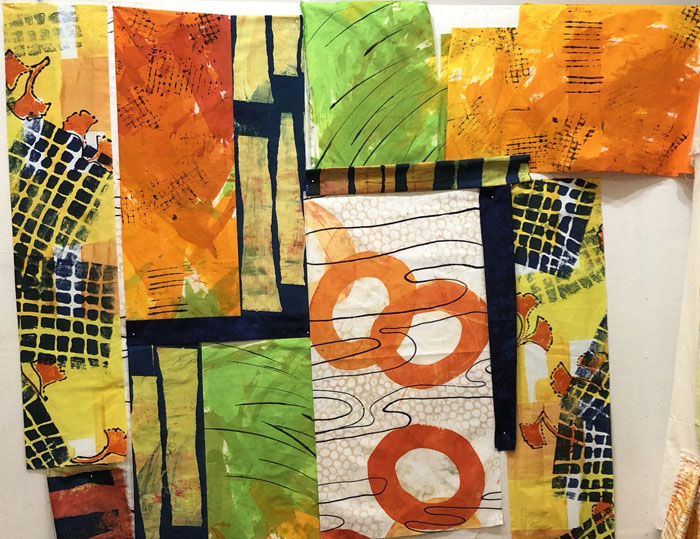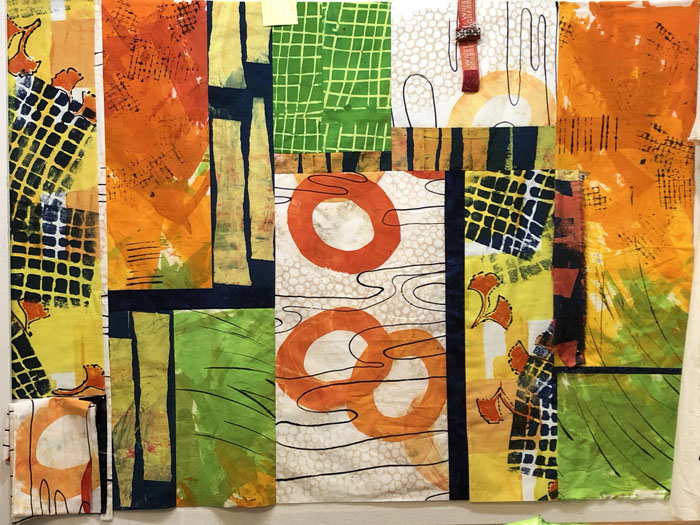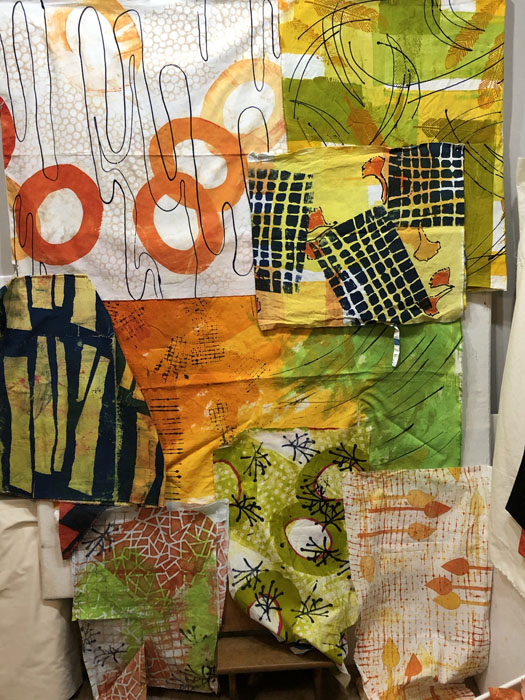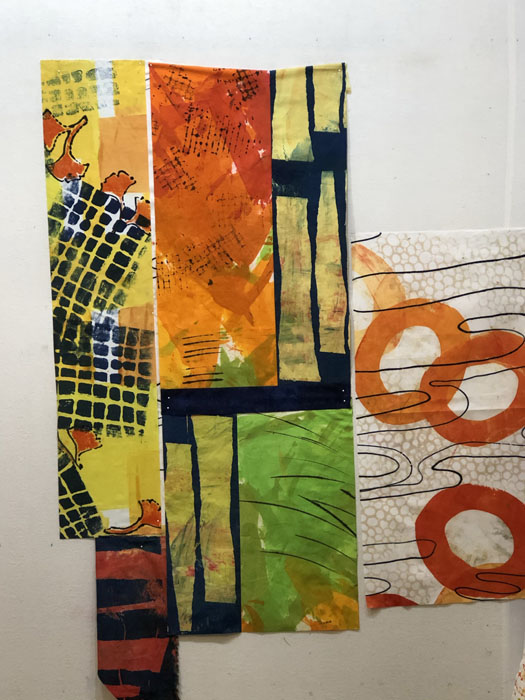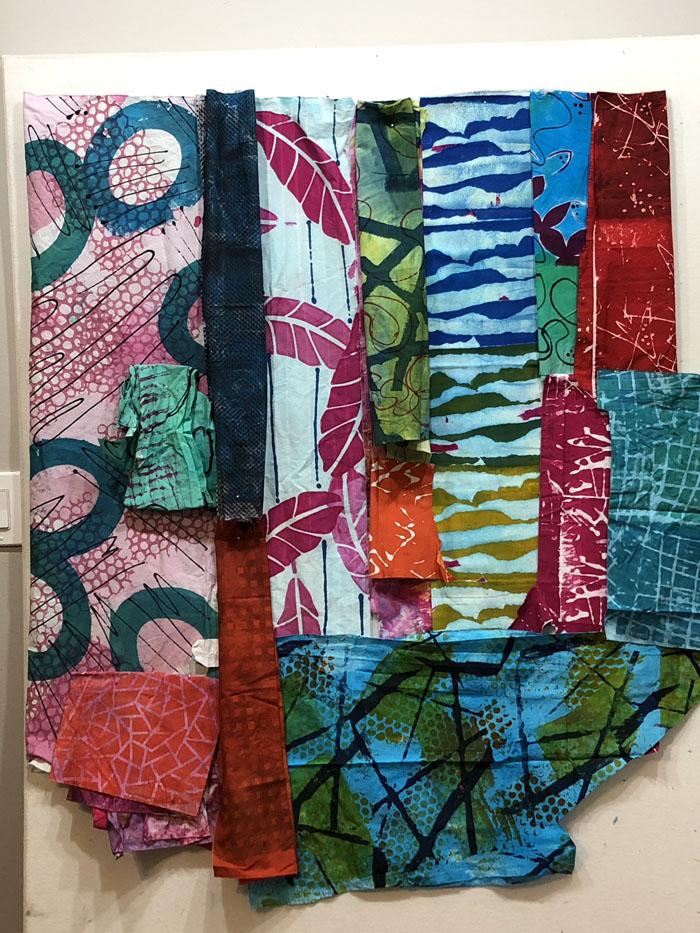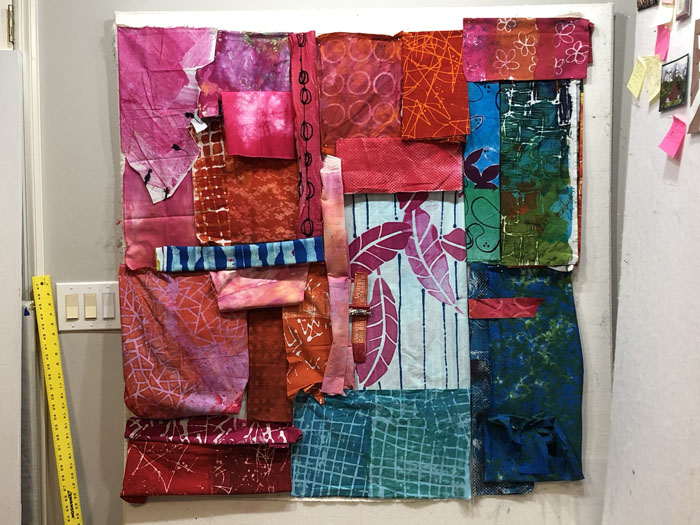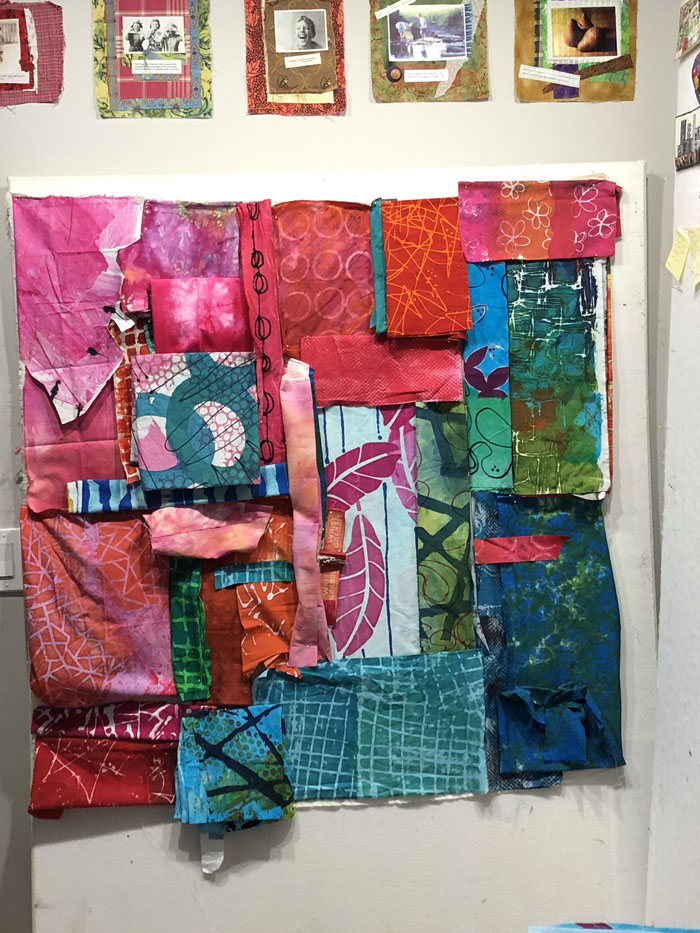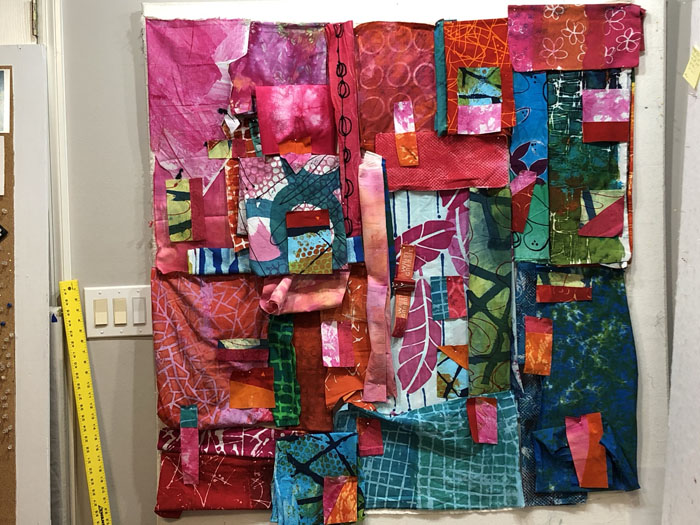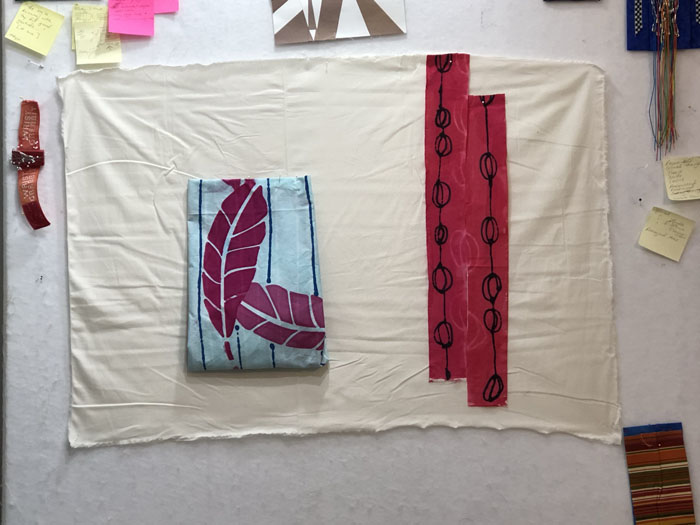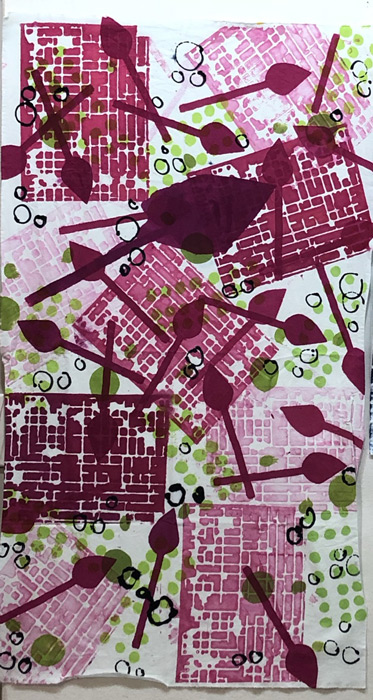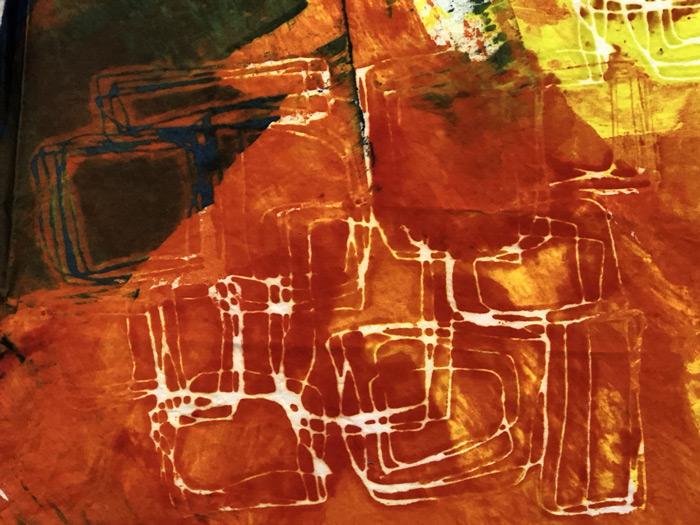When dyeing fabric, there are always a few fabrics that don’t quite match my intentions. When that happens, I consider over dyeing them. Which simply means dyeing the whole piece a second time.
The background color on this one was just too pale for my liking.
So, I over dyed it with a diluted red.
Truly. It really was diluted! But, apparently it was stronger than I realized. No worries. I like it better than before and I’ll definitely be able to use it. Maybe I’ll soften it with a subtle stamped design in white.
This green fabric was not bad except for the red lines I had drawn on. They made it really ugly.
I decided to embrace the red theme by over dyeing with orange.
Hmm, well it’s better, I think. Very usable, but not that exciting. I think I’ll draw on some dark blue or black circles.
Did I mention that dyeing fabric requires patience? Yep. Patience to wait to wash out fabrics and then patience when additional steps or corrections are needed. It sure is fun, though!
Ellen Lindner
Updated July 1, 2021:
I used white transparent fabric paint and stenciled a ginkgo leaf design onto the red fabric.
I also used the stencil as a guide for drawing additional leaves with a permanent marker. I really like the effect. I think I’ll be doing more of that.

